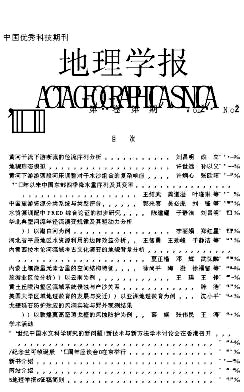ZHANG Yi li, LI Xiu bin, FU Xiao feng, XIE Gao di, ZHENG Du
The urban development of Lhasa were studied mainly by analyzing the literatures, interpreting the aerial photograph (1970, 1985, 1986 and 1991), using contour maps (1965 and 1987), and overlaying them with GIS, investigating the spatial variation with GPS, conducting ecological and vegetation surveys. According to a complete field survey and visitation from the August to the October of 1999, the land use change in Lhasa in the past 50 years were listed as follows: 1. From 1951 to 1999, the Lhasa urban area expanded by 10.31 times and construction area by approximately 19 times. The spatial variation include: (a) In 1951, the city region of Lhasa was the region compassed by the Lhasa Circular Road, with an area of 3 3 km2, including the Potala Palace and true “Lhasa”, except for Norbu Ling. The shopping centers, palaces and temples had an area of 111 66 hm2. The housing area was only 22 hm2, and gardens and grasslands totaled 1700 hm2, and the fallow lands making up more than 45% of the total urban area. (b) The city had expanded by average 25 11 hm2 per year from 1952 to 1965. After 1959, the construction of roads in the center of the city and the urban expansion made this ancient city new. The urban area reached 6 82 km2. (c) From 1966 to 1989, the area of the urban region expanded by 96 88 hm2. From 1966 to 1970, the new urban area was concentrated in the western and eastern of Lhasa with a new area of 5 05 hm2 and 11 87 hm2 added to the original area, 3 59 times of that in 1951 and with an average rate of 101 09 hm2. The hydroelectric station, asphalt roads and some public facilities were built up in succession. From 1971 to 1986, Lhasa got a fast development, especially after 1980, an area of 62 000 m2 for housing was constructed around the Bakuo Street in which 43 000 m2 were increased. In the northern and western of Lhasa, new constructions were emerged. The urban area reached 26 89 km2, 8 14 times of that in 1951, with an average rate of 93 88 hm2 per year. From 1987 to 1989, the urban construction occupied 46 74 hm2 of farmlands, 39 61 hm2 of high quality grasslands and 180 83 hm2 not used land with vegetation, with an average rate of 10 6 hm2. (d) From 1990 to 1999, the constructions of Lhasa were concentrated in the center area and vicinity suburb with an area of 399 hm2 and an average rate of 39 9 hm2. From 1951 to the end of 1999, the construction of Lhasa occupied almost 32 94 km2, with an average rate of 68 63 hm2 per year. 2. Restricted by the geographical situation, the Lhasa City urban area was developed to the western along the Qinghai-Tibetan Road at the beginning, then expanded toward both sides of it, and then toward the north later. 3. The cultivated lands per capita in Chengguan District of Lhasa decrease sharply with 0 049 hm2 in the early 1999, accounting for 77 7% of that in 1964. For a long period, there has no centralized management of land use for Tibetan residents, plants and mining area. In 1985~1998, only urban fundamental construction occupied 284 68 hm2 of cultivated lands. The area of cultivated lands in Chengguan District has decreased by 645 73 hm2 in 27 years, making up 23 66% of the total lands and with an average rate of 23 92 hm2 per year, from2 729 47 hm2 at the end of 1971 to 2 083 74 hm2 at the beginning of 1999. The cultivated lands use change per capita in Chengguan District of Lhasa shows that it has decreased year after year, from the maximum of 0 086 98 hm2 in 1972, decreasing rapidly in 1988, to 0 0492 hm2 at the beginning of 1999, accounting for 77 7% of that in 1964 and 61 4% of that in the whole country (0 076 8 hm2).
